On this page you will find specific solutions to uninstall LibreOffice in Windows. For any problems you encounter during the removal, feel free to leave comments at the end of the page.

LibreOffice is free and open-source software that includes several applications; it is a project of The Document Foundation. Development is open to new talent and new ideas. It also supports for all file formats of most other major office suites, including Microsoft Office, through a variety of import/export filters.
If you need guideline to correctly uninstall this program, we have that.
Most of the time, we uninstall unwanted programs with the built-in Add/Remove Programs utility or the program’s default uninstaller. But sometimes this just doesn’t work; they may still function well like a stubborn element after you reboot your computer. In case users perform anything incorrectly, we have listed every step with details; hopefully you can successfully, smoothly uninstall LibreOffice this time!

How to Uninstall LibraOffice Step by Step?
1. Exit the LibreOffice program.
Most programs will automatically close or ask you to shut them down during the removal, while a few will not. To ensure a complete, smooth removal, better shut down the program as well as the related possesses that are running in the background before activating its built-in uninstaller. You can do this through the System Tray and Task Manager.
2. Locate LibreOffice in the Programs list.
Right-click on the Start button, select Programs and Features, and locate LibreOffice in the list.
3. Uninstall LibreOffice in the Programs List.
Now you should be looking at the Program List, which tells you what programs are installed on your PC, the names of them and their publishers, when they’re installed, and how much disk space they’re taking. Double-click LibreOffice to activate its built-in uninstaller.
4. Follow the instruction to proceed and confirm the removal.
Once its built-in uninstaller pops up, click “Next” to proceed.
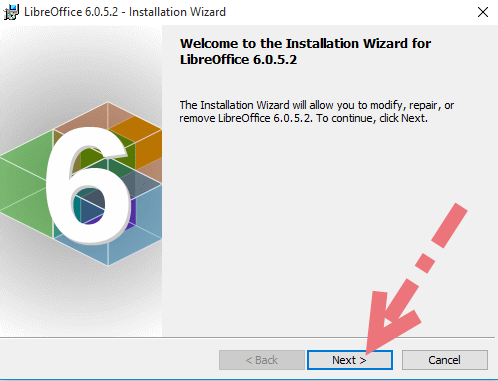
When given three options including “Modify”, “Repair” and “Remove”, Select Remove and click Next.
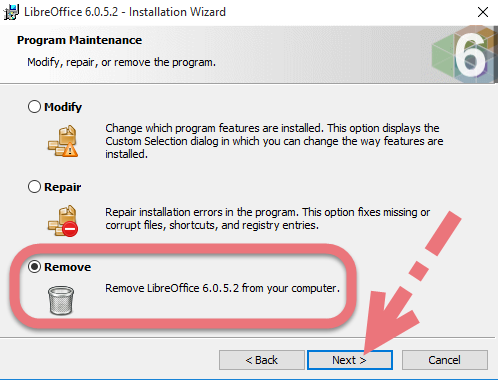
Then it will tell you: “Click Remove to uninstall LibreOffice from your computer. After removal, this program will no longer be available for use. If you want to review or change any settings, click Back.” Click “Remove” to proceed.
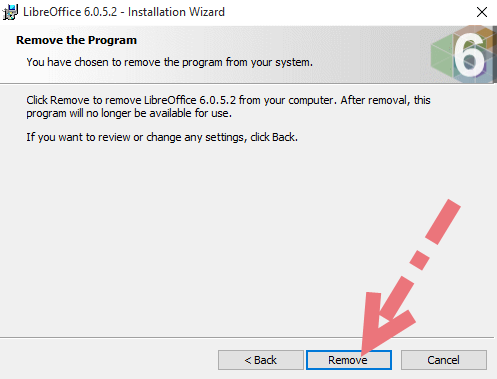
Wait until the uninstaller finishes its job, and move on to the next steps to search for the related lingering files. If you’re prompted to restart, do it right away or later, no big deal.
5. uninstall LibreOffice from Registry Editor.
During installation the program registers itself in the system, that’s why you can find their entries in the Registry; it also explains why sometimes you can’t run a program by simply copying the folder from somewhere else. This step is to delete the entries of LibreOffice. But you should know that using the Registry Editor incorrectly can cause serious issues and may result in an inoperable operating system. So don’t delete anything wrong.
Execute “regedit” in the search input field on the taskbar to open the Registry Editor. Then check for the following two folders with the left column explorer, if found, right-click on the them and select Delete to completely uninstall LibreOffice:
HKEY_CURRENT_USER\Software\LibreOffice\

6. Restart the computer (Suggested).
When you install/uninstall LibreOffice, it will register or unregister the usage of one or more .dll files. And when you choose to reboot your computer after uninstalling a program, Windows will close the program & delete any file that is no longer assigned to a program to clean up the computer. Not every program’s removal requires a restart, but I think it’s the best to follow the general idea.
Easily, Quickly uninstall LibreOffice with Special Uninstaller
This method applies to all the popular Windows systems, saving troubles and possible risks during the conventional removal. The following short video will give you a quick view of how it works:
Then here are the steps:
1. Download & install Special Uninstaller.
Click any of the blue download buttons on the page to download & install Special Uninstaller, then run it.
2. Uninstall LibreOffice.
Select LibreOffice in the Programs list, and click “Run Uninstaller”, follow the on-screen instructions of proceed and confirm the removal.
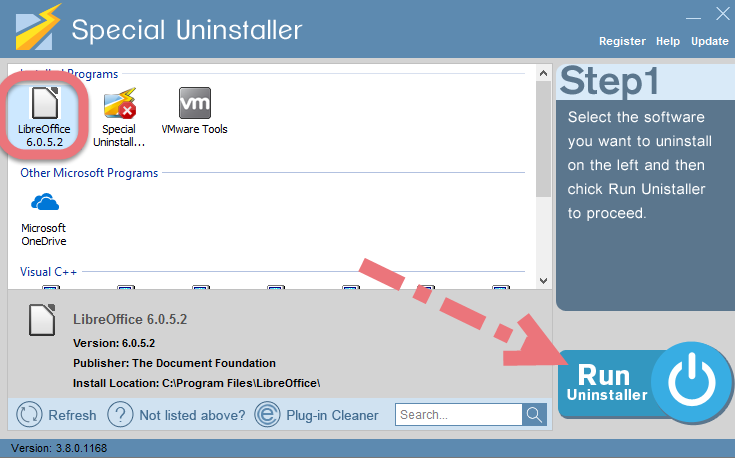
3. Delete the registry entries.
Click “Scan Leftovers”, and you will see a list of deleting files and registry entries (leftovers) of the program. You can review the list for details including their names and locations, then hit “Delete Leftovers” to fully uninstall LibreOffice.
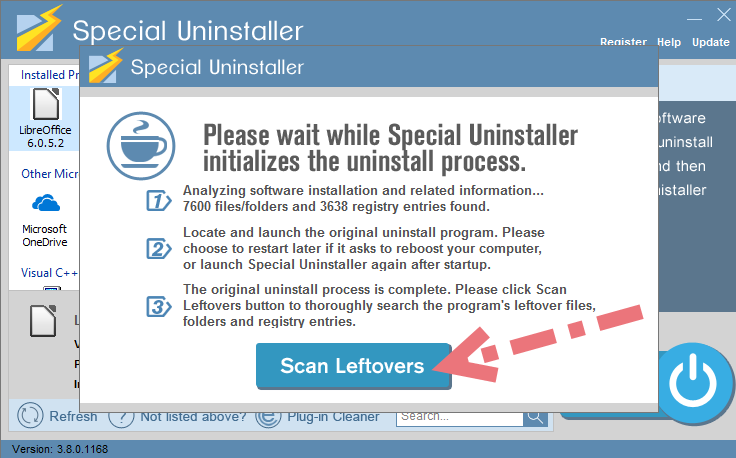
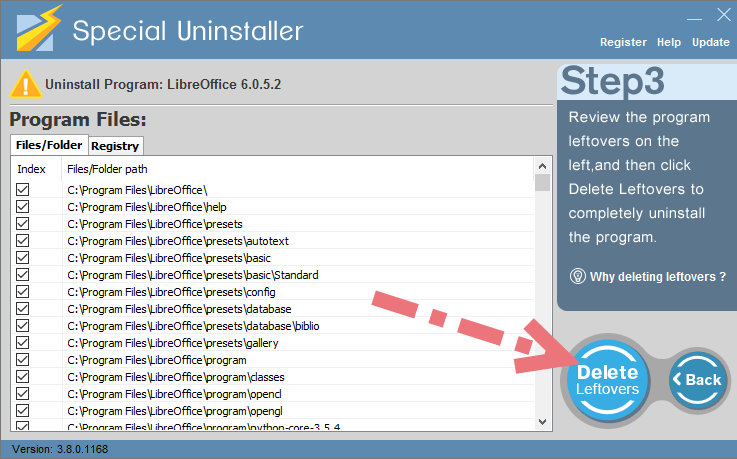
Clicking “Back” will bring you back to the list of currently installed programs, so that you can check whether the deletion was successful.
This shall apply to most of the programs, even those hard to get rid of. If you find it helpful, try it out on other stubborn software that you have failed to uninstall, or share this with other users who have difficulty in deleting any program.

Leave a Reply